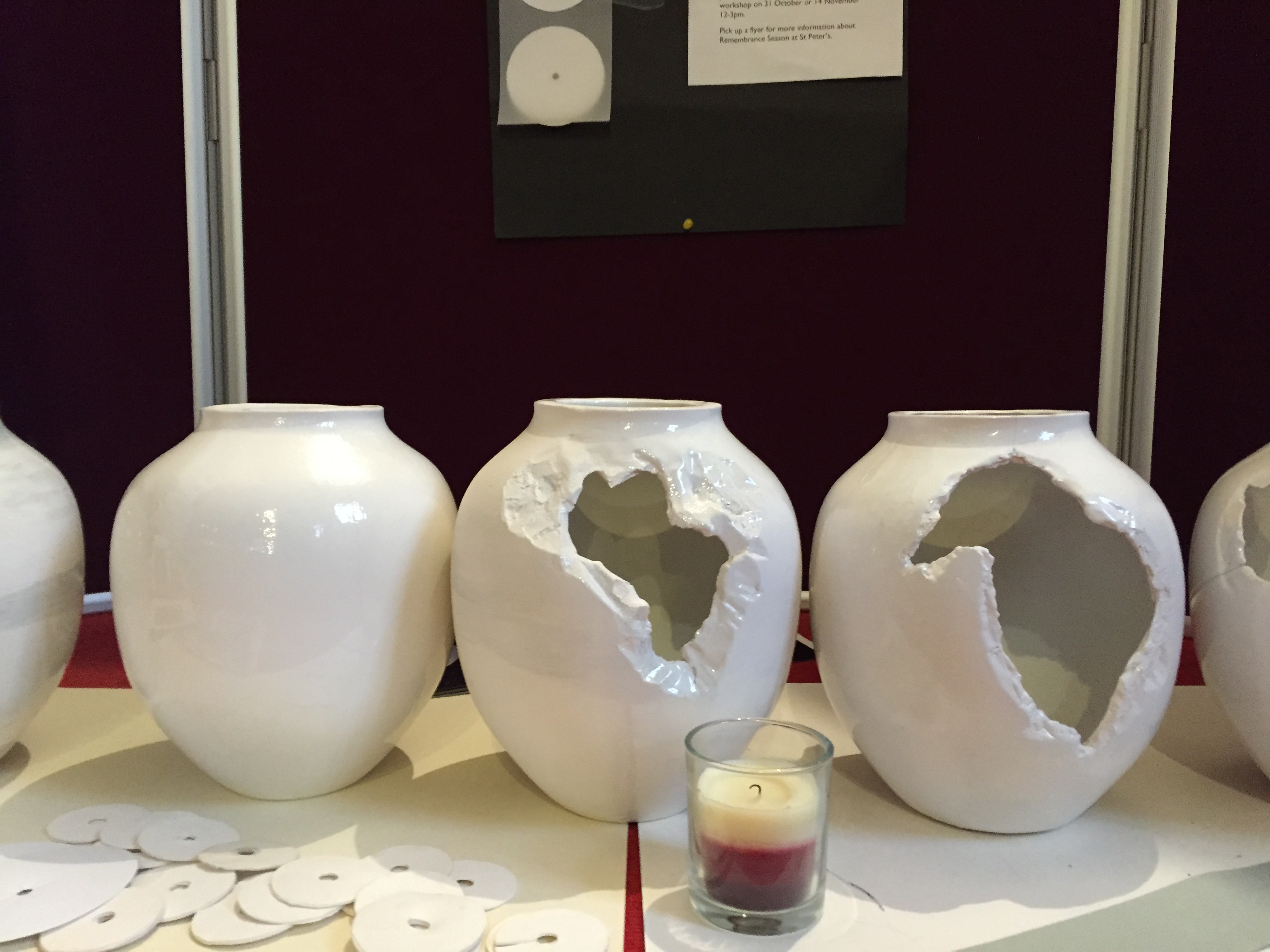St Peter De Beauvoir Town recently hosted its first artist-in-residence. Joanne Dorking is a local artist born in Hoxton. Her work includes drawing, sculpture, floral design and installation. Joanne graduated from Central Saint Martins with a BA in Ceramic Design in 2014.
For St Peter’s, Joanne worked with visitors, the congregation and people from the local community on a site-specific installation about death and remembrance. She described it as: “a collective prayer installation of fired earth remembrance circles in commemoration of those who have died – both those known to us personally and those killed in recent global conflicts”.
At the two ‘All Souls Workshops’, participants made clay circles decorated with names and messages to loved ones departed. Working with damp clay in the stillness of the church was a deeply therapeutic experience.
The simple manual task allowed people to open up and share their experiences of grief. The names of all those commemorated in church at All Souls were added to form over 200 clay circles.
Where to hang the circles? We decided on the only empty wall space behind the altar, where a curtain would have originally been hung.
Joanne was drawn to the church’s late-Victorian paintings, showing Jesus as the Good Shepherd surrounded by faithful apostles. In panels on either side are the four evangelists: Matthew, Mark, Luke and John. The shimmering golden circles of their haloes are echoed in the installation.
Wondering how to fix the poles to suspend the installation, we spotted for the first time the fixings for the original curtain rails. There was a strong sense that this was the right place for the fired clay circles to be displayed.
Joanne fires clay using a Japanese technique, with a lower temperature to create a solid but impermanent material. The ceramic objects disintegrate over time, paralleling the natural processes of decay and loss.
“My work focuses on impermanence in response to loss, memory and grief. Clay is a material that is in beds of strata in the ground. It’s a decomposition of granite that forms over thousands of years. So to use clay, to create a design and know that it will one day return to its original state makes impermanent art for me much more stimulating.”
Drawing on Joanne’s research on art and remembrance, the residency also offered two further opportunities for reflection. A ‘Dialogue on Death’ in the Café in the Crypt explored experiences of death and grief around the world. The evening ended with an inspiring session in a nearby pub on how to plan your own funeral.
The impact of Joanne’s work in the church has been powerful.
Pastorally, it has opened up conversations otherwise buried. Liturgically, it enriched the seasons – moving from remembrance into advent and on towards the feast of the incarnation. Perhaps most significantly, she brought a crowd of people into the church who might otherwise have thought it wasn’t a place for them.


Comments are closed